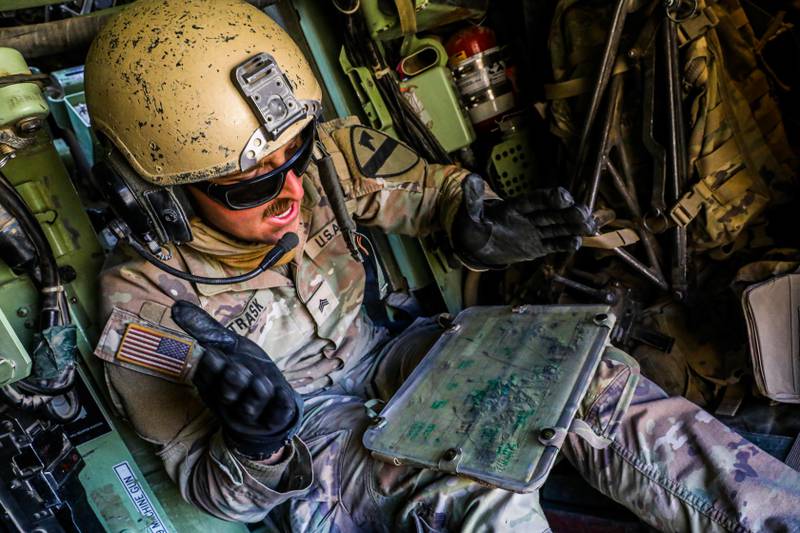Editor’s note: This article was updated March 6, 2024, to include an additional statement from the U.S. Navy.
Sophisticated networking and communications capabilities derived from the U.S. Navy’s hush-hush Project Overmatch are deployed on at least three carrier strike groups, according to the commander of the Third Fleet.
Project Overmatch represents the sea service’s contribution to the Department of Defense’s multibillion-dollar connectivity campaign known as Combined Joint All-Domain Command and Control. Military leaders have shared few details about its progress since inception in 2020, citing competition with Russia and China.
During a March 5 discussion with reporters at Camp Pendleton, California, for the Army’s technology crucible dubbed Project Convergence Capstone 4, Vice Adm. Michael Boyle said Project Overmatch is “already fielded on” three carrier strike groups. He did not name them, nor did he say for how long the capabilities had been installed.
Project Overmatch engineers are participating in PCC4, where they are identifying connectivity gaps and fixes, according to Boyle. The capstone event aims to improve information-sharing and coordination of firepower across the military.
“We’re not just experimenting for the sake of experimenting. We’re experimenting to understand what works and what doesn’t work, and what do we want to pursue as a capability that connects us together,” the admiral said. “This is proving that we can connect, that I can connect, to a Patriot battery, that I can connect across the joint force, that I can connect through a tactical operations center-light to Air Force sensors and bring that information in.”
RELATED

A Navy spokesperson corroborated Boyle’s count when asked by C4ISRNET. The spokesperson declined to name the carrier strike groups, but said the rollout is ahead of schedule.
Navy officials have in the past said Project Overmatch’s introduction to the fleet would focus on the Indo-Pacific — a vast region where Washington may clash with Beijing and where digital links will be strained — and then expand globally. Project Overmatch was also expected to play a role in Large Scale Exercise 23, featuring 25,000 sailors and Marines as well as aircraft carriers, submarines, logistics support and simulated units.
Project Overmatch trials kicked off last year with the Carl Vinson carrier strike group off the coast of California.
Rear Adm. Doug Small, the leader of Naval Information Warfare Systems Command, later said much was learned from the testing.
“It’s never something we’re done with. It’s a constant learning and a constant improving process,” Small said in February. “Not only have we fielded it, we’ve updated and re-fielded and delivered over-the-air capability based on what it is that sailors need.”
The Navy sought $192 million for Project Overmatch in fiscal 2024, which began Oct. 1. A full defense budget, however, has yet to pass Congress.
Colin Demarest is a reporter at C4ISRNET, where he covers military networks, cyber and IT. Colin previously covered the Department of Energy and its National Nuclear Security Administration — namely Cold War cleanup and nuclear weapons development — for a daily newspaper in South Carolina. Colin is also an award-winning photographer.
- SEO Powered Content & PR Distribution. Get Amplified Today.
- PlatoData.Network Vertical Generative Ai. Empower Yourself. Access Here.
- PlatoAiStream. Web3 Intelligence. Knowledge Amplified. Access Here.
- PlatoESG. Carbon, CleanTech, Energy, Environment, Solar, Waste Management. Access Here.
- PlatoHealth. Biotech and Clinical Trials Intelligence. Access Here.
- Source: https://www.defensenews.com/battlefield-tech/c2-comms/2024/03/06/overmatch-networking-installed-on-3-carrier-strike-groups-says-boyle/



